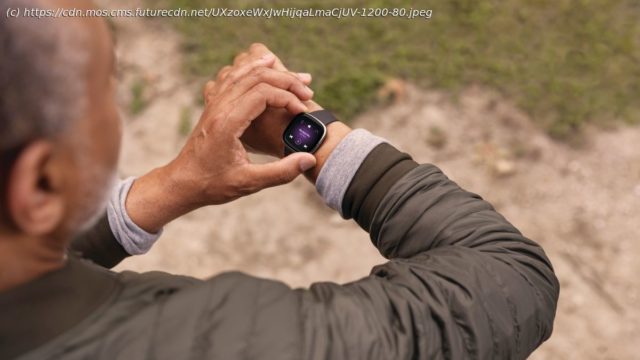What other how-to guides don’t tell you about forming new habits, setting goals and why you should consider taking a break.
You got a new fitness tracker or smartwatch for Christmas. Great! Now what? Whether you’ve got the latest Apple Watch Series 6, a Fitbit, an Oura ring or any other one of the best fitness trackers or best smartwatches, it’ll come with instructions – online or within a physical booklet – to help you get the device (and you) up and running. You’ll need to download the accompanying app, pair your device with your phone, charge it up and learn how to use the basic controls. Exactly how you do these things will vary from device to device and we recommend you follow the step-by-step instructions and do those first. However, most instructions get you started. But what comes next? Beyond the set-up steps, there are plenty of other things you need to know to get the most out of your new wearable so it can make a positive difference to your life and work for you, not against you. You don’t want it to be a negative drain, a waste of money or another present that gets stuffed in a drawer somewhere and forgotten about. Our advice includes the importance of a comfy fit, habit-setting suggestions, why customization is worth it, tips about goals and much more. Of course, every wearable device is different, as is every person who wears one. But these are our suggestions that should give most people a better chance of getting on well with their new wearable device. You just put it on and fasten it tightly, right? Sort of. It’s very easy to strap any wearable on and start using it. But it’s important to be mindful about how it fits. Are the buckles digging in? Is the material irritating you a little? If it doesn’t feel good now, you won’t want to wear it in future. You want a ‘just right’ fit that isn’t so tight it leaves marks on your wrist, but is tight enough for the sensors to work properly. For example, most wearable devices these days have a heart rate sensor built-in to the back. For this to measure bloodflow accurately, it needs to be close to your skin. Play around with how tight you wear your new smartwatch or fitness tracker and, if you need to and it’s possible with your device, swap out the strap for one that’s a better fit or made from a more comfortable material. The key thing to remember when you get a new wearable device is: make it work for you. What we mean is there are plenty of devices that can track and do all kinds of things. Some people might love this and want to find out everything there is to know about their sleep, fitness levels, stress levels and much more. Others might just want to count their steps and take a look at heart rate data occasionally. Just because your device can do anything doesn’t mean you need to track or care about everything. This can lead to you becoming overwhelmed, focusing on numbers that don’t really matter to you and just extra stress you don’t need. A good place to start in defining what matters to you and what doesn’t is to customize the stats you see on your app’s dashboard. It’s not possible to do this for every wearable. But some, like Fitbit, allow you to ‘edit’ which stats are shown as you open up the app (take a look at the screenshots above). For example, with the Fitbit app you can customize your dashboard so you see nothing about calories. This is really handy if you want to feel generally fitter and healthier but don’t want to focus on weight loss – which can be problematic for some people. One workout we do a lot at the moment is spinning. However, for the longest time it’s been the last activity in the exercise menu on our Fitbit Versa. Sure, we can just scroll down to select it. But it would only take a minute or two to move it to the top spot by using the Fitbit app, making things feel easier and more intuitive. If you have a wearable that has a screen and allows you to customize or make small tweaks to what you see on it, spend some time ensuring it’s exactly what you need – in the order you need it. This might not seem like a big deal. Who cares if you have to scroll two more times to find the workout you need? But it’s these small bits of friction that can make using tech feel more like a chore than a helping hand – especially if they all start to add up. So taking the time to change these settings now and make them more ‘you’ will help in the long-run. We’ve tried a lot of wearables over the years. Sometimes we’ve had to take them off to charge them and immediately put them on as soon as the battery reaches 100 per cent. Others get left for days because we just keep forgetting amidst all the other jobs we need to do.






